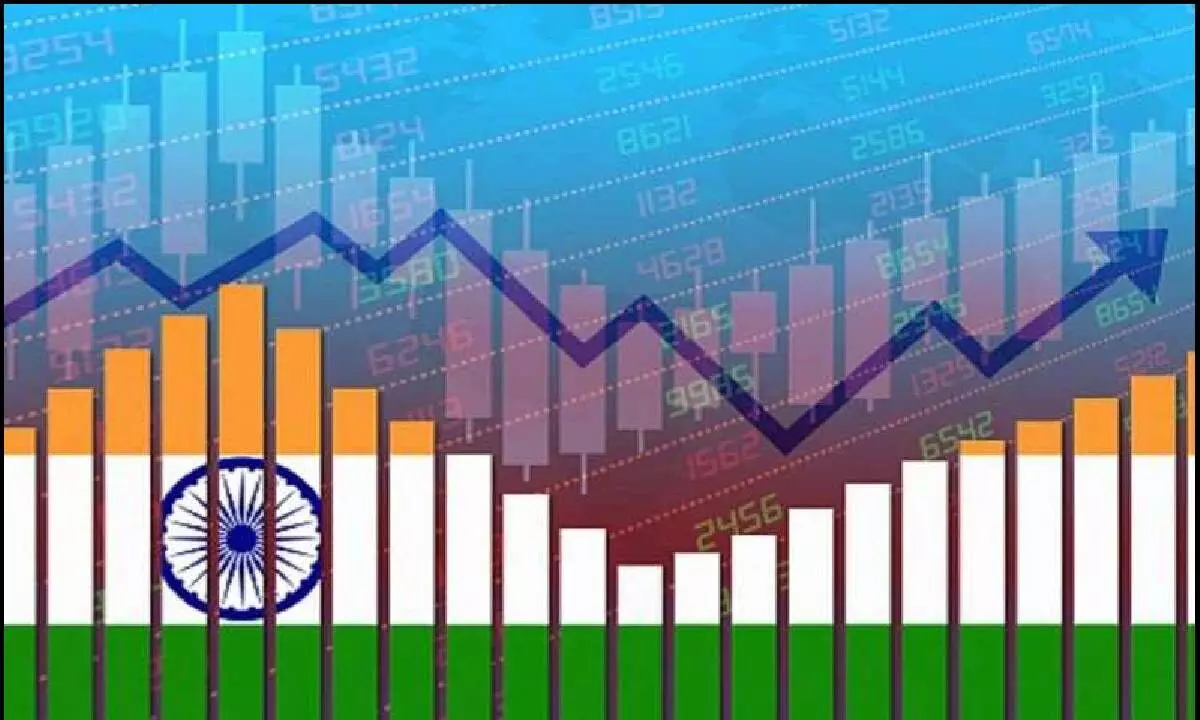India to be among top 3 economies in world by ‘26-27
India to be among top 3 economies in world by 2026-27, said Rajeev Chandrasekhar, Minister of State for Electronics and Information Technology and Skill Development and Entrepreneurship, Government of India. The digital economy will be the biggest contributor with 20 per cent of the GDP by 2025-26, he added.
image for illustrative purpose

Mumbai, May 12 India to be among top 3 economies in world by 2026-27, said Rajeev Chandrasekhar, Minister of State for Electronics and Information Technology and Skill Development and Entrepreneurship, Government of India. The digital economy will be the biggest contributor with 20 per cent of the GDP by 2025-26, he added.
According to him, “Our Prime Minister envisions India to be among the top three economies in the world by 2026-27 and a large part of this growth expansion will come from digital.”
He was speaking today at the Public Affairs Forum of India’s (PAFI) Dialogue on the theme, ‘PM’s Vision for India’s Tech Decade – A Deep Dive.’
He further added that India hopes to achieve the $1 trillion digital economy landmark by 2025-2026. Digital Economy will also be a big part of catalysing the entrepreneurial culture in the country with more and more start-ups contributing to the economy.
He elaborated on the focus in the next ‘Techade’ where the Government aims to intensify, grow and accelerate the three pillars of Digital India established by the Prime Minister in 2015. They include technology empowers and transforms people’s lives, technology as a driver for the expansion of the economy and entrepreneurship, and the role of India in the future technology-dominated world, not just as consumers but as creators of technology.
The Minister also addressed the current issues that the Government is currently focussing including talent in the digital space. He added, “In the semiconductor space, in a span of 14 months we have not just created opportunities in manufacturing, design and innovation but also introduced a brand new curriculum that will be implemented in higher education systems that will deliver 85,000 highly qualified professionals. This will be a talent pool not only for the Indian semi-conductor and electronics ecosystem but also for the global ecosystems.”
Addressing the public policy professionals he stressed “Digitalization of Government and public services is accelerating even faster. We have created an awe-inspiring transformation of the process of the government. The G2C relationship has created more trust and transparency.”
He further added, “We are embarking on a journey to be a global player in emerging technologies – AI, quantum computing, semi-conductor, etc. Several policies will be made by the government. Our Honourable PM’s wants these policies, laws, etc of global standards so that they are a catalyst to our ambitions. The public affairs professionals can play a role here by participating in the consultation process, which is being institutionalised now, with their thoughts, ideas, solutions and suggestions.”
He urged the public policy practitioners to leave behind the concept of lobbying and help the government shape the ‘India Techade’.
Virat Bhatia, President PAFI, welcomed the Minister of State for Electronics and Information Technology and Skill Development and Entrepreneurship, Government of India and moderated the session.
Vinita Sethi, Vice-President PAFI, shared the closing remarks.

